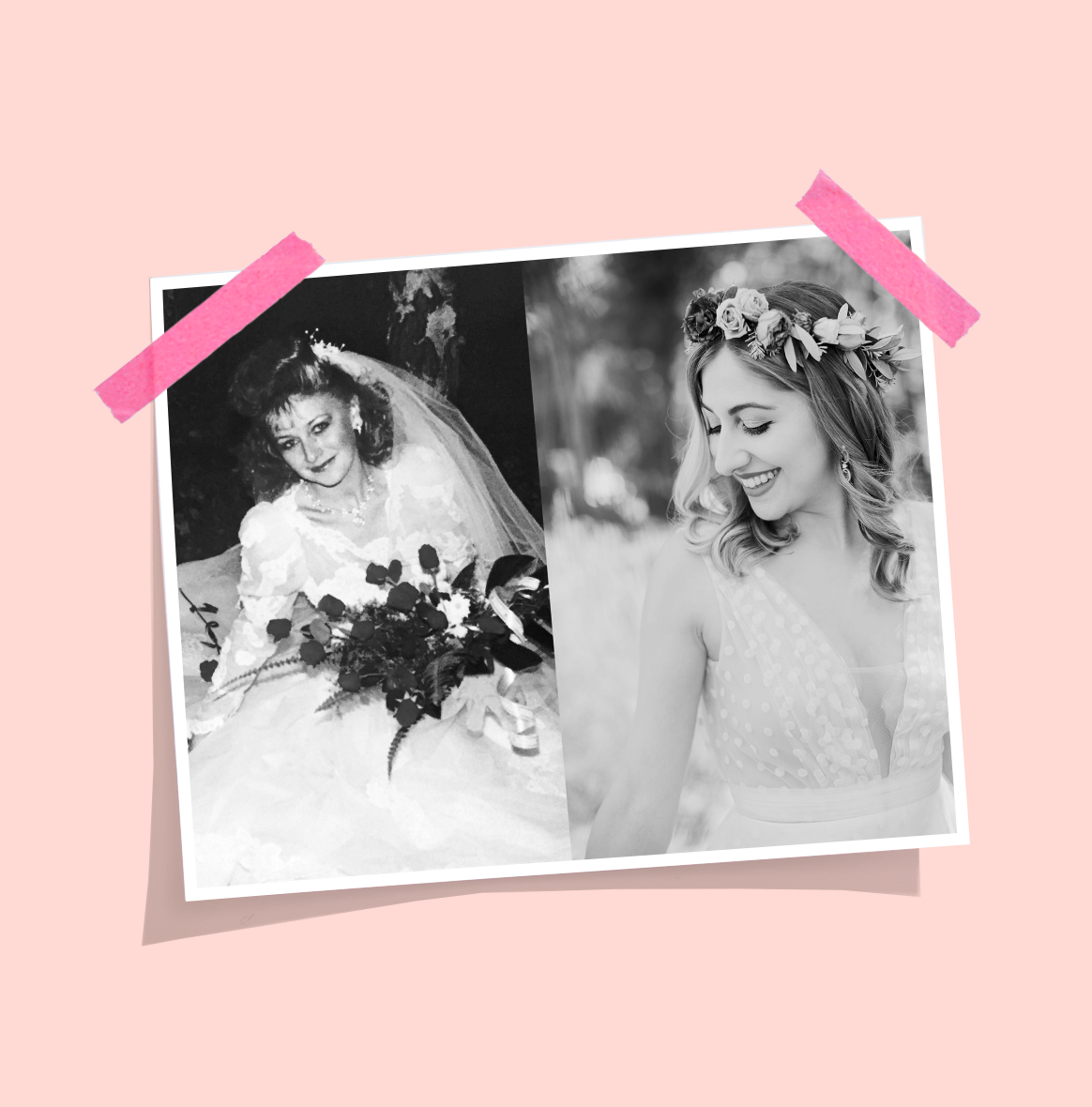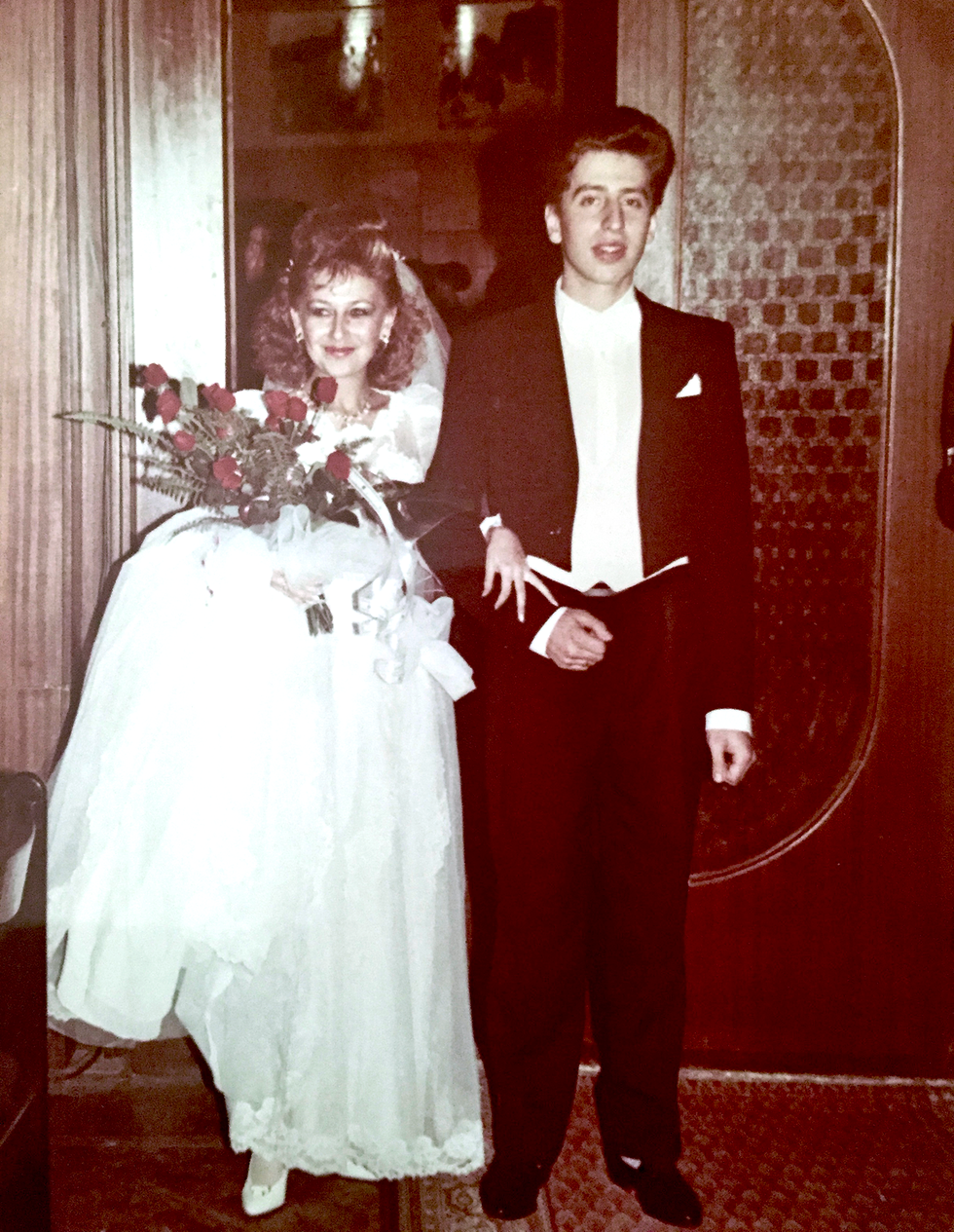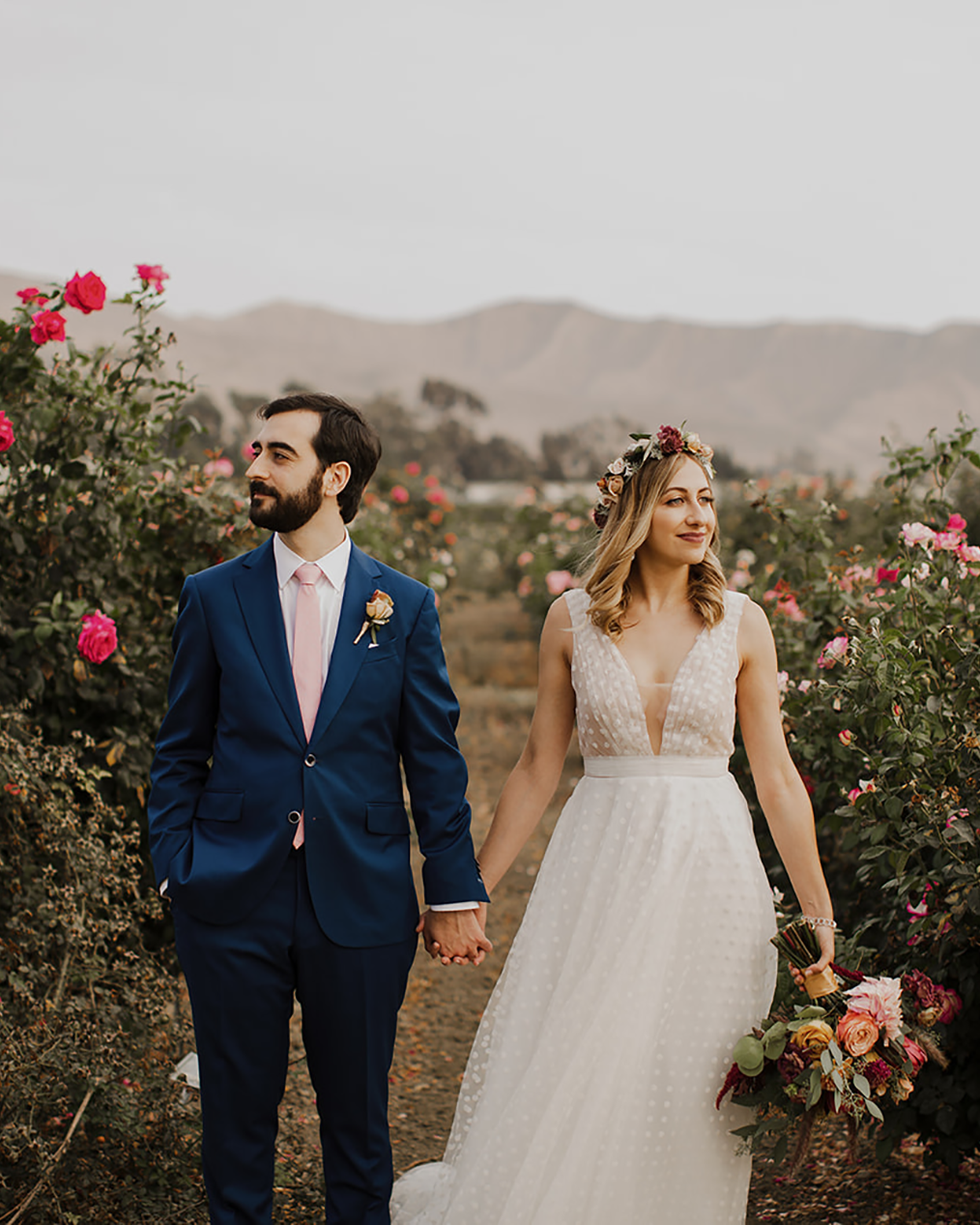
The Journey for a Wedding Dress: How My Mother’s Soviet-Era Wedding in Moldova Shaped My Search 26 Years Later
My quest for a wedding dress in Moldova was more than just a personal journey—it was a connection to my family’s past. My mother, who married in Soviet-era Moldova in 1989, wore a dress gifted by my father’s distant cousins in Philadelphia. At the time, only a few clothing manufacturers were authorized to sell to the Soviet Union, resulting in limited wedding dress designs. My mother’s unique dress created a stir amongst the women outside city hall, who even offered to buy it off her back. She eventually sold the dress and veil to a stranger two days later. This experience shaped my search for a wedding dress, as I sought to honor my family’s history while also finding my own unique style.
My mother’s wedding dress was a stunning white creation with long sleeves, delicate lace, and a merengue-like train. The dress featured shoulder pads and beaded flowers that complemented the pearl drop necklace and bejeweled veil clip that my mother wore. Her bouquet of red roses stood out against the white dress, even in the sepia-toned photos. My mother was just 20 years old when she wore this dress at her wedding, while my father, 23, donned a tuxedo borrowed from a member of the Symphony Orchestra of Moldova, thanks to my maternal grandmother’s connections.

My parents met while studying at university, where my mother was pursuing pharmacy and my father medicine. After a year of dating, my mother boldly asked my father when he planned on proposing. Her confidence at just 19 years old was impressive, especially when compared to my own experience. I started dating my now-husband at 19, but I wasn’t ready to plan the rest of my life at that age. We got engaged eight years later, just after my 27th birthday. Adam proposed at my favorite LA indie bookstore, Skylight Books, beneath the Ficus tree that blooms in the center of the store, after treating me to lunch and a photography exhibit.
We opted for a two-year engagement due to Adam starting graduate school and the overwhelming number of choices in front of us. We had the option of getting married in a synagogue, on a campground with a functional Ferris wheel, or at an aquarium between walls of rainbow fish. I even considered wearing a magenta patent leather romper. Meanwhile, my parents’ choices, like those of most Soviet citizens, were limited to getting married at a restaurant or a family home. The local synagogue, which was rundown and unsafe due to state-sanctioned antisemitism, was not an option. My parents ultimately chose a popular hotel restaurant with a security guard, who conveniently disappeared when local troublemakers barged into the reception demanding a cut of the wedding presents.
Despite the plethora of options available to me, I didn’t find any American wedding dresses that I loved. One dress had flower appliqués that accentuated my figure, but it felt too generic as it was heavily advertised on social media. Another dress was a tight Grecian-style gown that weighed a ton, while another was a sheer white-and-silver outfit that barely covered my nipples. My mother and I went from boutique to boutique, sipping champagne as I tried on one tastefully revealing outfit after another. None of them felt right.
My wedding was shaping up to be nontraditional from a post-Soviet perspective. We chose a family-owned farm as our venue where guests could feed alpacas, much different from the banquet halls decorated with white roses and crystal chandeliers I had seen at recent family weddings. We didn’t serve beef stroganoff or Olivier salad, and our band didn’t play “Russophone hits” (sorry, Alla Pugacheva and J.Lo). While I wasn’t sad about our American-leaning choices, I didn’t want to erase my ethnic background either. Balancing my identity was a challenge I had faced many times, but it never got easier.
I grew up in Los Angeles, straddling two distinct cultures from the age of two. We often talked about the life we left behind with a mix of nostalgia and bitterness. Despite the challenges, our community had one another’s backs, and the fruit was delicious. The Soviet Union was a terrible place to be a Jew, and bribery was necessary to get by. We spoke Russian, but we weren’t Russian. We lived in Moldova, but we weren’t Moldovan, as Jews were excluded from national identities. I grew up without a word to describe my identity and without a specific place to call home.
When I had the chance to return to Moldova with my parents for the first time in 2019, I became fixated on finding my wedding dress there. I hoped that by wearing a gown from Moldova, I could reenact the opposite of my mother’s experience of wearing a dress from America, and unite the various parts of my identity.

During our five-day visit to Moldova, my parents and I visited their childhood friends and old hangouts. The restaurant where my parents got married was abandoned and in disrepair, with loose wires hanging from the ceiling and the floor covered in weeds and shattered cement. We also visited my parents’ medical school, our former apartment complex, and the Jewish cemetery where my ancestors were buried. The neglected and weather-worn headstones and dense weeds made the stories of survival under state-sanctioned antisemitism and Soviet terror feel more real than any dress ever could. It seemed like everyone buried there had been forgotten, despite my parents’ assurances that they paid a groundskeeper to tidy our ancestors’ graves every month. By the time we went shopping for a dress the next day, the idea of a wedding dress being able to bridge the gap between the life my family left behind and the one I had in the U.S. felt laughable.
Finding the dress carried an outsized weight, as we visited three bridal boutiques recommended by the daughter of my mother’s childhood best friend, whose family had stayed in Moldova. We were all daughters of Moldova, but my mother and I felt like helpless tourists in the place we once called home. When I tried on a gauzy white dress embroidered with small velvet polka dots and a deep vee bodice, I knew it was the one. But the moment wasn’t euphoric as I had expected it to be. Finding my wedding dress in the city where I was born, surrounded by the ghosts of the life we left behind, was bittersweet and emotionally charged.
My family’s history in Soviet-era Moldova was marred by tragedy and persecution. My father had to serve in the Soviet Army to secure a coveted spot in medical school reserved for Jews. Thirty years prior, my great-grandfather was murdered as an enemy of the state. Another 20 years before that, my late grandfather’s wife fled Moldova at the start of World War II and narrowly escaped a bombing that killed her family’s cow. She was just three years old at the time. The vivid details of these stories have stayed with me long after my return to the U.S. and made it impossible for my wedding dress to be just a dress. The fabric of my family’s past was woven into every stitch.